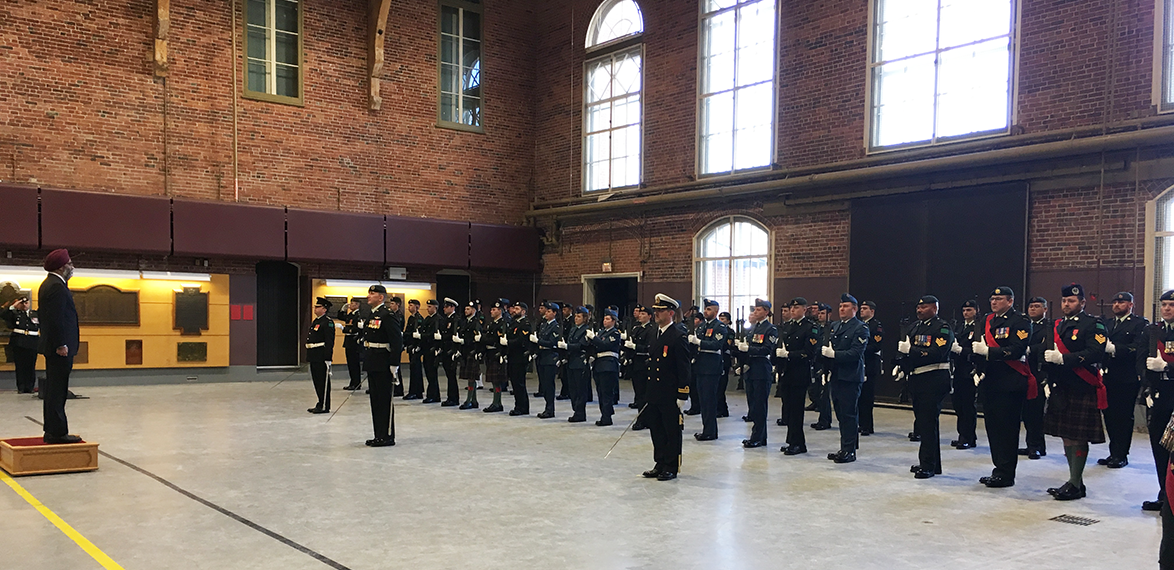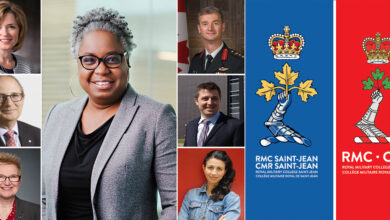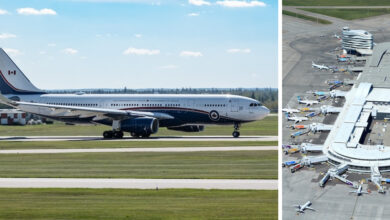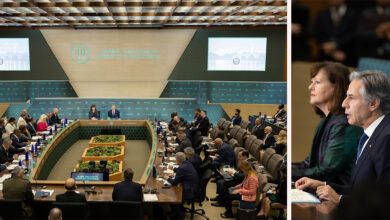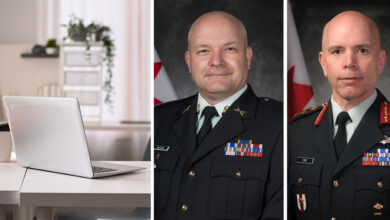This morning at Cartier Square Drill Hall, located in downtown Ottawa with an honour guard comprised of personnel from the Joint Personnel Service Unit and Integrated Personnel Support Centre, Minister Sajjan and Minister O’Regan along the Chief of Defence General Jonathan Vance announced the launch of the Canadian Armed Forces Transition Group.
Designed to prepare military personnel when it comes to releasing from the military, the group will be comprised of centres and units with the mandate to focus on improving the transition experience of Canadian Armed Forces members, veterans and their families.
In his address to the crowd, General Vance pointed out that many military personnel, like himself, have never been an adult civilian, having joined the forces right out of high school and then spending 20 to 30 years serving their country deploying on tours, courses and taking part in exercises. Military personnel, along with their families spend most of their careers transitioning.
“New formations to stand up is a rare thing,” said Vance. “When they do stand up they mark the priority and intent of the Armed Forces… This today marks one of the highest priorities of the armed forces. A formation stood up to take care of people. A formation stood up to take care of people at a point of time in their careers when we have typically not looked to take care of them. We have looked to release them.”
The Transition Group assumes a new role within the CAF to standardize and professionalize transition services to better meet the needs of all personnel in the Regular Force and Primary Reserve.
The announcement comes after many years of the armed forces focusing on the release of a CAF member without substantial means of support for members and their families during or after their release. The goal of this program is to ensure that all Canadian Armed Forces members, veterans and their families receive the full range of support, compensation, and benefits available to them.
Commander Canadian Armed Forces Transition Group Brigadier General Mark Misener Cartier Square Ottawa
“Our government recognizes that the transition process has been challenging for many years. We have heard from many members that the transition left them at times feeling abandoned, disrespected and frustrated,” says Minister of National Defence Harjit S. Sajjan. “That is not the way those who have chosen to serve our country should be treated. So we are overhauling our transition process with a particular focus on the transition to post-military life.”
To make the transition process as seamless as possible, the Government of Canada has invested in new online tools, including the Military Career Transition portal on Canada.ca, My Transition Guide, My Transition app and enhanced transition training available to all members planning to transition to post-military life. Each year, approximately 10,000 members release from the CAF.
The Transition Group will launch a trial at CFB Borden that will help the Canadian Armed Forces Transition Group in developing the professional, standardized and personalized approach to transition that will eventually be put in place across the Canadian Armed Forces.
Seamus O’Regan, Minister of Veterans Affairs Canada, says it is critical to help those people who are falling between the cracks and having a hard time with transitioning.
“Most Canadian Forces members transition quite well after service,” says O’Regan. “They go on to make great contributions to communities across the country, but not all do, that’s why we need to make sure that every veteran who wants to achieve the same, is able to do so. And we know we have to do more to help them. I know we need to make sure there are supports are in place to help members through change.
In collaboration with key partners, including Veterans Affairs Canada, the Transition Group will work to design a renewed process with the goal of assisting CAF members in their journey throughout their career and beyond.
Look for more information in our Winter issue out in January.


